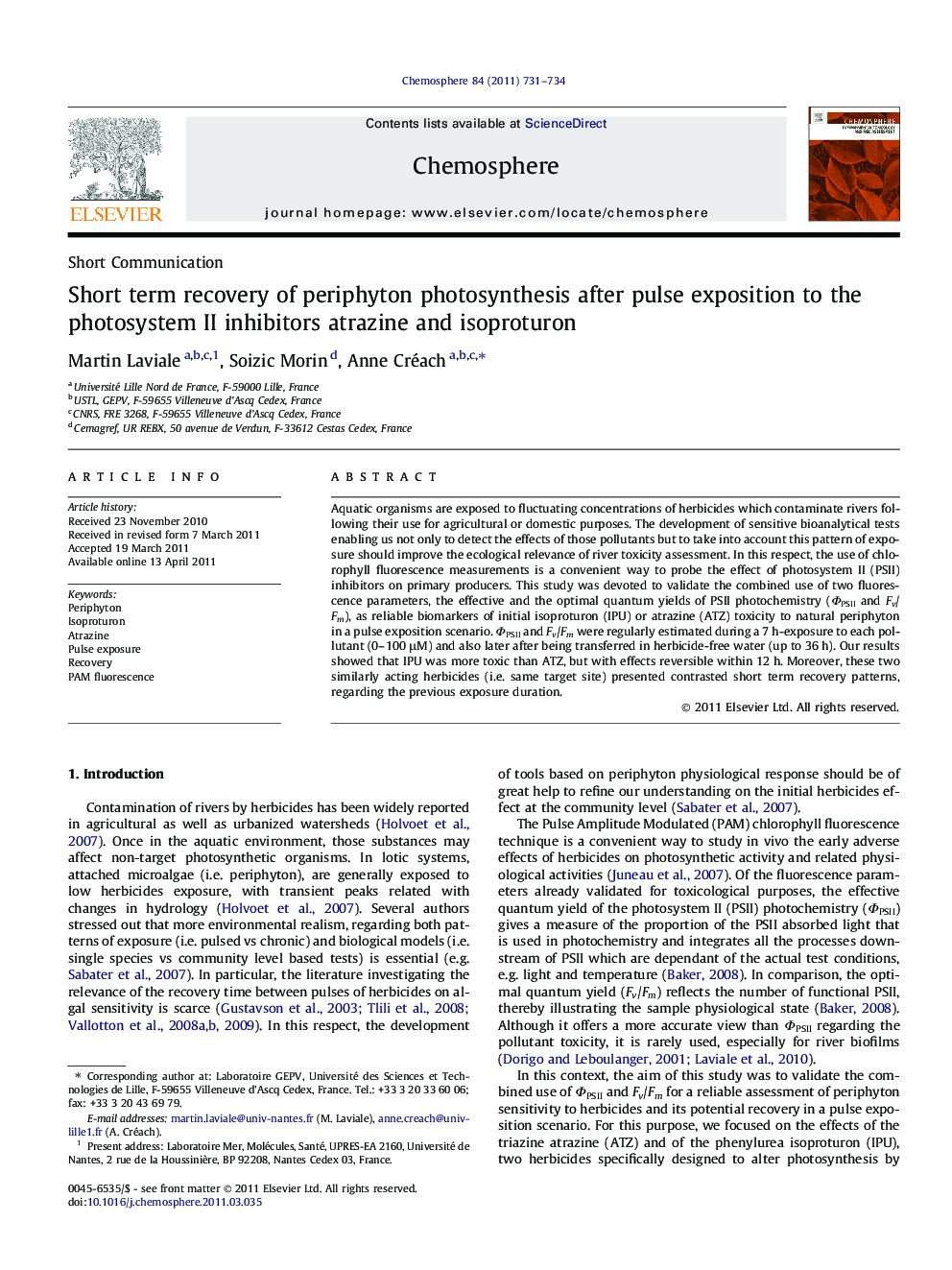| Article ID | Journal | Published Year | Pages | File Type |
|---|---|---|---|---|
| 4410631 | Chemosphere | 2011 | 4 Pages |
Aquatic organisms are exposed to fluctuating concentrations of herbicides which contaminate rivers following their use for agricultural or domestic purposes. The development of sensitive bioanalytical tests enabling us not only to detect the effects of those pollutants but to take into account this pattern of exposure should improve the ecological relevance of river toxicity assessment. In this respect, the use of chlorophyll fluorescence measurements is a convenient way to probe the effect of photosystem II (PSII) inhibitors on primary producers. This study was devoted to validate the combined use of two fluorescence parameters, the effective and the optimal quantum yields of PSII photochemistry (ΦPSII and Fv/Fm), as reliable biomarkers of initial isoproturon (IPU) or atrazine (ATZ) toxicity to natural periphyton in a pulse exposition scenario. ΦPSII and Fv/Fm were regularly estimated during a 7 h-exposure to each pollutant (0–100 μM) and also later after being transferred in herbicide-free water (up to 36 h). Our results showed that IPU was more toxic than ATZ, but with effects reversible within 12 h. Moreover, these two similarly acting herbicides (i.e. same target site) presented contrasted short term recovery patterns, regarding the previous exposure duration.
► ΦPSII and Fv/Fm were estimated during herbicide exposure and recovery. ► The effects on photosynthesis were significant within 1 h and reversible within 12 h. ► Isoproturon was more toxic than atrazine. ► Exposure duration and the herbicide tested influenced differently biofilm recovery. ► We recommend combining these two biomarkers in future ecotoxicological bioassays.
